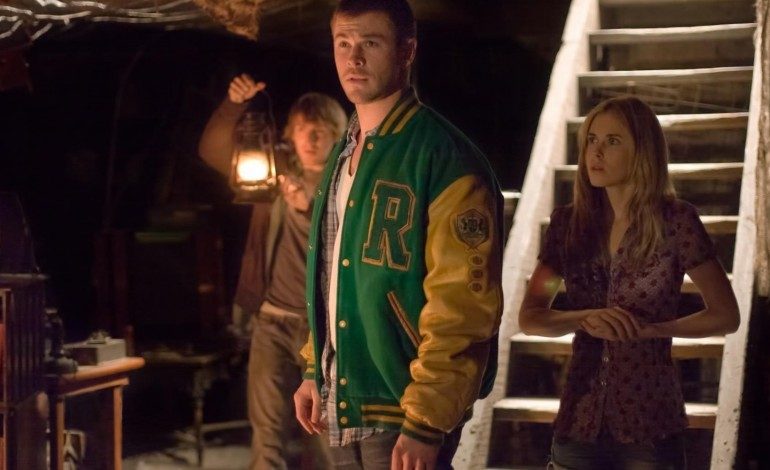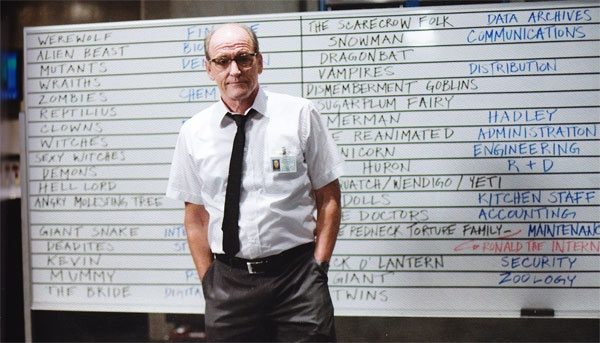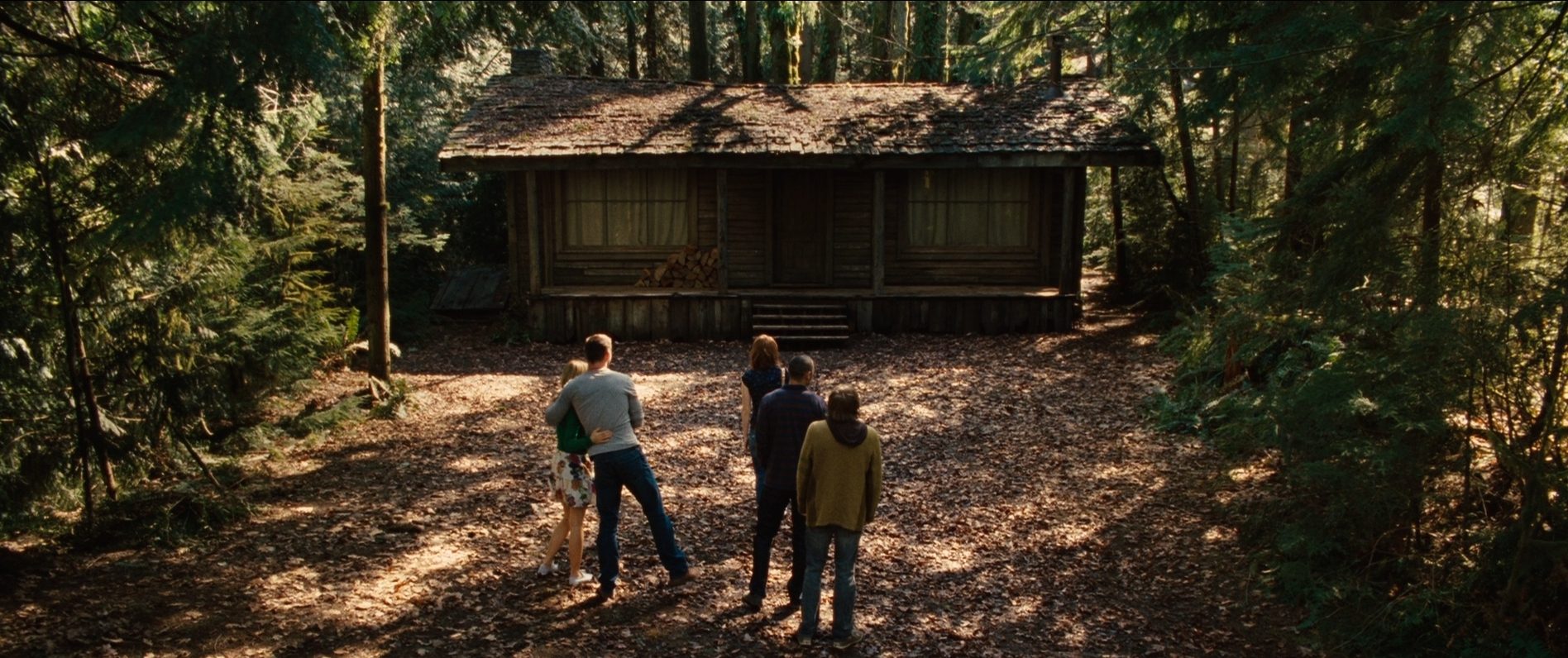

On April 14th, news surfaced that a copyright infringement lawsuit is being filed by a California based author against The Cabin in the Woods studio Lionsgate, as well as the movie’s writer-producer Joss Whedon and writer-director Drew Goddard. In his formal complaint, plaintiff Peter Gallagher claims that the film’s central idea is directly based on his 2006 novel, The Little White Trip: A Night in the Pines, and is suing the defendants to the tune of $10 million in damages.
Now, we’ve seen our fair share of similar disputes lately, but this one is particularly interesting. For one thing, its timing is exquisitely chosen for maximum scandalous impact: Whedon is in the middle of what might be the biggest press tour of his career in the ramp up to the release of Avengers: Age of Ultron, and the Goddard-developed Daredevil TV show just became widely available on Netflix.
But beyond that, this lawsuit raises a much more interesting and difficult question. The Cabin in the Woods is based on other properties. That’s a period, full stop, no questions about it, statement. The film is a genre parody, a piece intrinsically derivative of parts of other works, and the film wears this on its sleeve from the get-go. So… can something like that really be considered a piece of plagiarism?
Two small warnings as we get started. First of all, because of the nature of this intellectual property debate, we are going to be discussing the plot of The Cabin in the Woods in depth. That means that we are going to be spoiling a pretty tricky film every which way from Sunday, so if you haven’t seen The Cabin in the Woods (why haven’t you seen it? It’s great!) take the hour and a half to do that right now, and then meet us back here.
Secondly, at the time of this writing, I have not read Mr. Gallagher’s novel. I have, however, read the full complaint that was filed, which I highly encourage you to do, so we’ll be discussing the similarities between the two works as they have been presented and articulated by the plaintiff and his legal team. So with that in mind…
Let’s talk about copyrighting a piece of fiction in the United States of America.
Believe it or not, this is a murkier issue than you might suspect. The U.S. copyright act states that a person can copyright any work of authorship, such as a literary work, a musical work, or a dramatic work, but, “In no case does copyright protection for an original work of authorship extend to any idea, procedure, process, system, (…) regardless of the form in which it is described, explained, illustrated, or embodied in such work.” In less jargon-y terms, this means that by and by ideas can’t be copyrighted, only their specific realization within a particular work. So, if you mention your great idea for a film about a time-traveling velociraptor detective and then twelve months later I release my new smash blockbuster Velociraptor P.I.: Forwards to the Past, I’m probably in the clear. On the other hand, if you write your film, and then I release a film that has extremely similar characters and nearly identical plots that match up scene-by-scene… then you’ve got a lawsuit. Obviously this is a bird’s eye oversimplification of an extremely nuanced subject matter – for more information on the intricacies click here.
The Cabin in the Woods, released by Lionsgate in 2012, is a film about five friends who go up to a remote cabin for a weekend, only to find themselves under attack by the undead former owners of the house. By the end of the film, however, they’ve realized that there’s something much bigger going on, a massive conspiracy that has been manipulating things behind the scenes to create a real-life horror movie. Meanwhile, The Little White Trip, written by Peter Gallagher and self-published in 2006, is about a group of five friends who go up to a remote cabin in the woods, only to find themselves under attack by the… undead former owner of the house. And by the end of the novel, they have realized that the events are being manipulated by… a massive conspiracy that’s been working behind the scenes to create a… real-life horror show… Okay, this sounds bad.
Or does it really? The thing to remember about The Cabin in the Woods is that the film is making itself out to be a meta-commentary on recurring tropes and iconic elements of the horror genre. The film isn’t simply choosing the elements that go into its construction because they are good building blocks – it’s consciously and deliberately recreating stock scenarios from the horror genre in order to offer up a play on them. Take for instance the most obvious of these elements: the titular cabin. This was selected as a setting because it’s been used in so many horror films that it’s practically become synonymous with the horror genre. Cabin Fever, Secret Window, Friday the 13th, The Blair Witch Project, Antichrist, and, perhaps most saliently for this film, Sam Raimi’s Evil Dead series (among many others) all make use of the cabin in the woods setting.
The same goes for most of the plot elements that Gallagher’s lawsuit asserts are suspiciously similar between both projects. The teenager or young adult protagonists? Cross reference Halloween, Scream, and I Know What You Did Last Summer. Undead terrorizers? Everything from Night of the Living Dead to Dead Alive. One of the more specific similarities: on the way to the cabin, the friends stop and get a warning from a local, a gas station attendant and a bartender respectively. Sounds pretty close, until you remember how many films, from The Hills Have Eyes all the way to Deliverance, have this stock character as an early signpost for the upcoming creepiness. Unfortunately for Mr. Gallagher, both his novel and The Cabin in the Woods are based around the idea of putting the experience of creating a horror film into a dramatic setting – the fact that so many ideas in the stories-within-the-story match up smacks less of likely plagiarism than it does of how deeply ingrained and monolithic the genre’s tropes and icons are.
And how does that film create this idea of a horror film? By filling its cast with teenagers that are off on a vacation to somewhere remote. By having the kids have a creepy encounter with locals before they get to their destination. And, you guessed it, by centering all of the events of the film on a cabin in the woods. This isn’t Hollywood aping the specific execution of Gallagher’s ideas; it’s both the filmmakers and the author paying attention to the huge trends that have become dominant fixtures of the genre.
These are the exceptions, however. The vast majority of the similarities listed are directly derived from genre conventions and common scenarios. The cabin does not have cell phone reception? Trope. The protagonists drink alcohol and play games? Trope. The male leads are killed? Trope. The list goes on and on.
Much more telling are the parts of The Cabin in the Woods that the complaint does not address. Beyond the wide similarity that both the film and Gallagher’s novel feature some sort of conspiracy, nothing in the lawsuit touches upon the aspects of the film that are set within Richard Jenkins and Bradley Whitford’s bunker headquarters. These are the parts of the film that are not based on generic horror conventions, and they are precisely the ones that the lawsuit gives a wide berth. Sure, the concept might be similar, but remember: an idea’s execution is what’s under copyright, not the idea itself.
What are the specific details of this concept’s execution in The Little White Trip that are being ripped off in Whedon and Goddard’s film? Does the tech team behind the conspiracy have an office-wide bet going on? Is there a problem caused by the chemicals department’s inability to do their job well? Does one of the managers have a fixation with seeing a deadly underwater creature in action? These are the particularities of The Cabin in the Woods that the film is bringing into conversation with the preexisting formula, and for the lawsuit’s case to be convincing, here is where the majority of the similarities would have to fall.
As it is, however, Gallagher’s case seems to be an oddly lacking one. It’s true, perhaps both his book and the film have the same central idea, but the specific details that it attacks The Cabin in the Woods for are, for the most part, ones that Whedon and Goddard have no claim to creating to begin with. And – guess what – they’re also the ones that Gallagher can stake no claim of ownership over. They’re the ones that are drawn from the wellspring of the horror genre, from the great language of iconography and convention that horror films have slowly but steadily developed over the past hundred years of existence. Both works are commentaries on a tradition, basing their ideas on the works of others before them. To try to stake authority over that and to prevent others from carrying out similar exercises seems contrary to the spirit of the work that you seem to be defending.





